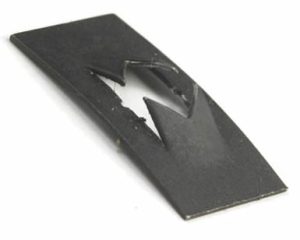
Nuts are commonly used to secure the end of a bolt. After inserting a bolt through two or more objects, you can twist a nut onto the end of the bolt. The nut will hold the objects together so that they don’t separate.
While most nuts feature a solid, hexagonal design, others are flat. Flat nuts are still used in conjunction with a bolt, but they feature a different design.
Overview of Flat Nuts
Flat nuts are flat, single-piece fasteners that offer an alternative to traditional nuts. They are typically made of spring steel. Rather than securing the end of a bolt with a traditional nut, you can use a flat nut. A flat nut will secure the end of the bolt, thereby holding the objects together.
How Flat Nuts Work
Like most other nuts, flat nuts are designed for use with a threaded fastener, such as bolts. Bolts are threaded fasteners. You can insert a bolt through two or more objects. But you’ll still need to secure the end of the bolt. Otherwise, the objects may separate from each other, or they may even slide off the bolt. While you can always use a traditional nut to secure the end of the bolt, another option is to use a flat nut.
A flat nut will secure the end of the bolt. They are classified as self-locking nuts because of their ability to lock onto bolts. Flat nuts have tabs around the central hole that work like a spring. As you drive a threaded fastener through the hole, the tabs will compress. This compression will lock the flat nut in place.
Tips on Choosing Flat Nuts
When choosing flat nuts, make sure they support the fasteners with which you intend to use them. All flat nuts are designed for use with fasteners. Some of them support larger fasteners, though, whereas others support smaller fasteners.
You should consider the thickness when choosing flat nuts. Some flat nuts are just 0.017 inches thick. Others are 0.031 inches thick. Thicker flat nuts are typically stronger than their thinner counterparts, but they’ll take up more space.
Flat nuts are available in different styles. While most of them are flat with a set of tabs in the center, others are U-shaped. Known as U-clips or U-nuts, you can snap them over panels. If you’re working with a wooden, plastic or metal panel, you may want to use U-clips or U-nuts. With their U-shaped design, they are ideal for panels such as these.
